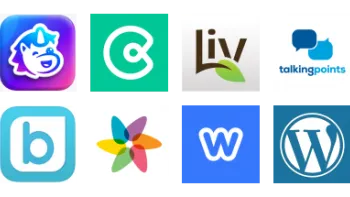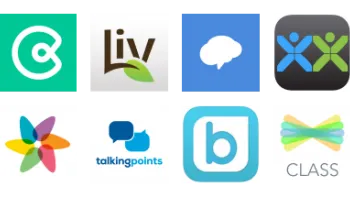
Digital Citizenship Week is October 20–24!
Join teachers worldwide to promote a healthy, positive approach to media and tech.
Take a look inside 8 images
Classting
Pros: Super-simple features for posting announcements, homework, and classroom activities.
Cons: Limited options for moderating content and differentiating posts for different audiences; no translation.
Bottom Line: A simple, practical tool for fostering communication between home and school.
If your school doesn't already have a parent communication system in place, check out Classting's features to see if they'll meet your needs. There are brief how-to videos linked from the developer's website (though some aren't available); watch these to learn more about setting up your classroom, posting items, and sharing classroom codes with students, families, and co-teachers. Consider using this tool as a one-stop shop for school-to-home communication, or use it to fill in a gap in your school's existing communication system. Perhaps this could be a place to share important items like permission slips that are otherwise tough to find on a school website. You could also consider this a more informal virtual front door for your classroom, sharing daily photos, updates from class, and videos from in-class activities and events. This could be a friendly and private way to share in-class milestones and special occasions with families who might not be able to attend in person.
You might also consider using the classroom exchange feature: There's potential to connect with other teachers around the world for a virtual field trip, a virtual pen pal experience, or some other interesting remote connection. Also, play with the classroom management features like the roulette wheel and the timer. They're visually appealing enough that you could project them on a screen to help students take turns or as students work on a timed task.
Classting is a messaging platform where teachers can share photos, videos, and files with students and their families. After creating a free account, teachers can get families online by sharing a class code, either by sending an email or printing out a helpful written invitation. Caregivers and students can send private messages to their teacher, and teachers can allow parents and students to post in the classroom, though there's no feature for moderating such posts. Teachers can also set up a classroom exchange, where their classroom is connected with another. The developer is based in South Korea, and users are from around the world; however, there are limited guidelines for making the most of this feature, so it's up to teachers to decide what they might post and share. In addition to the site's messaging capabilities, some simple classroom management tools are available, like a timer, a chalkboard-like paint tool, and a rainbow roulette wheel that you can spin to pick a number.
Using Classting feels like using social media -- in a good way. It's easy to set up a classroom and share photos and files, and it's easy for parents and students to see the latest posts and send a quick message to their teacher. The simple visual style may be the platform's best feature: It's straightforward for teachers to upload files and post reminders, and it's equally simple for parents and students to do the same. This could make classroom reminders and daily updates feel more breezy, friendly, and approachable.
The platform's drawback might be that simplicity. There aren't many customization options; for example, you can set your classroom so that only teachers can post or so that anyone can post -- there's no middle ground, and many teachers might want more options for moderating posts. Also, there are no translation options, which makes it difficult for caregivers and teachers who don't speak the same language. While the classroom exchange option seems like a nice feature, there's not much guidance for how teachers might make the most of it, and it's not clear that this feature adds much value to the everyday user. With lots of other communication options available, Classting's lack of customization and translation features prevent it from being in the top of the heap. But it's free to check out -- and use -- Classting, so if the layout and features are a solid fit for your classroom, then its simplicity might work well.

















